Hey! How much SEO can I get for less than $500 a month?
This is a common question among bootstrapped startups and small businesses on a very tight budget. Yet, the answer is quite simple. Here we’ll tell you how to do seo on a small budget.
This budget is too small to get quality work done by a reliable SEO agency, so you’re left with only one viable alternative; do it yourself. Though your cash outlay is small, you are still going to have to invest a lot of time to learn SEO and get the job done.
The good news is you don’t need to spend thousands of dollars on SEO courses or expensive memberships to SEO tools. For most people, a good book on SEO and some modestly priced seo tools (many of which are free) will do the job.
Use The Right SEO Tools For The Job
You’re going to need some tools to start, and with a budget of $500 per month, you’ve got options. The trick is making sure you get the right tools to match your level of experience.
Ahrefs, Moz, and SEMRush are some popular SEO tools used by many professionals. They’re excellent tools, of that there’s no doubt. But if you’re not an SEO pro, you’ll find yourself faced with lots of data to sift through, analyze and prioritize. Therein lies the problem for the SEO neophyte. What do you do with all that data?
A better alternative for those with less experience would be beginner-friendly tools like WooRank, HubSpot, MarketGoo, Yoast SEO and of course CanIRank.
CanIRank pulls data from the popular SEO tools, as part of your subscription, and delivers actionable insights, opportunities, and personalized recommendations. While there’s a lot you can accomplish on your own with this tool, the CanIRank team can help with the question of how to do seo to grow your business.
Pursue Keywords For Which You Can Realistically Rank
It’s notoriously difficult to rank for highly competitive keywords. In the winner-take-most world of SEO that means you’ll get the highest return on your efforts by concentrating on keywords that are within your reach. High-value low-difficulty keywords are the best ones to shoot for when just starting out. All things being equal, getting on page one for a handful of keywords offers a better return than ranking for more keywords on page 2 or 3. Targeting long tails like this has been the best ecommerce SEO strategy for the past few years.
Before you run off to Google’ keyword planner to check on keyword competitiveness, understand that it only applies to competition among AdWords advertisers. That’s right, companies to compete to get a prime spot on Google’s paid placements. But that’s not going to help you understand how to do SEO, to compete for ranking in the organic results.
Personally, I like using the CanIRank SEO Tool to figure out the likelihood of ranking for a particular keyword. Determining keyword difficulty can be a little tricky. CanIRank provides an overall ranking probability percentage that tells me what sort of chance I have for making it onto the first page of search results. Higher is better, and wherever possible, I like to try for keywords with a probability around 75% or greater.
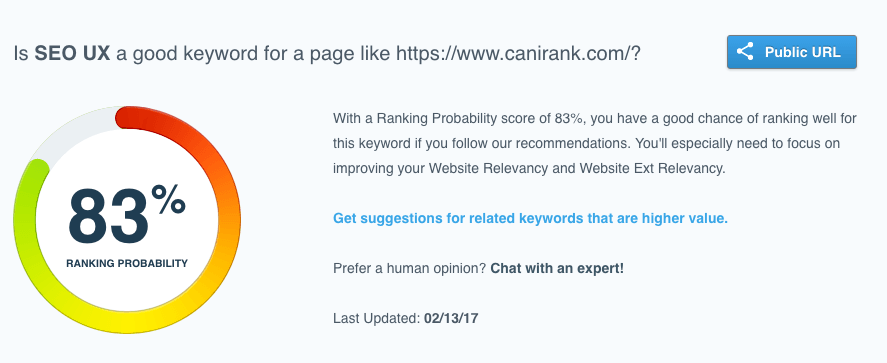
The report also provides a detailed matrix of your site versus the first-page competition for that keyword. Here you can see the areas that may need some extra work in order to rank well. Note that because the content on your site doesn’t exist yet, CanIRank can only make some assumptions.
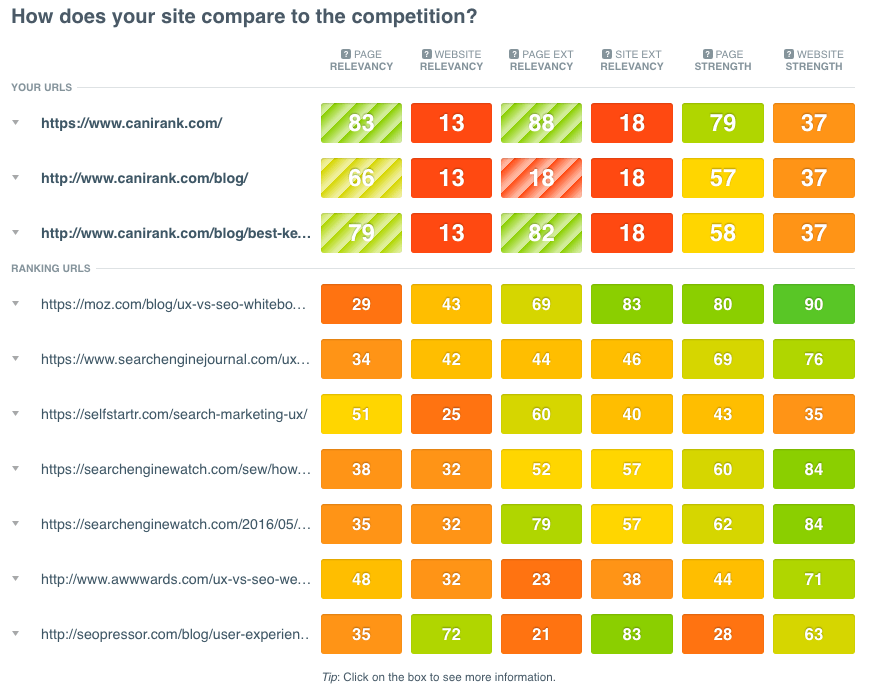
Optimize Existing Content For SEO
On-page optimization is an important part of ranking successfully, regardless of the competitiveness of a keyword. Developing this skill early on has both immediate and long-term benefits, so it’s a good place to start learning SEO. An additional benefit is that it’s something totally under your control, so you’ll see results faster than engaging in other activities, such as outreach.
Start optimizing your most valuable pages, like your home page, first. Then move on to progressively less useful pages.
Consider adding related terms to your post, where appropriate. Related terms help search engines better understand your topic and also provides a better user experience. If you’ve ever come across the term latent semantic indexing, this is an easy way to apply that concept.
While you may be tempted to reach for a thesaurus to help, I like to use CanIRank’s keyword research tool to see what kind of keywords the competition is using. This gives me significant insight into what’s working right now to get those pages to rank well. After all, it works for the competition!
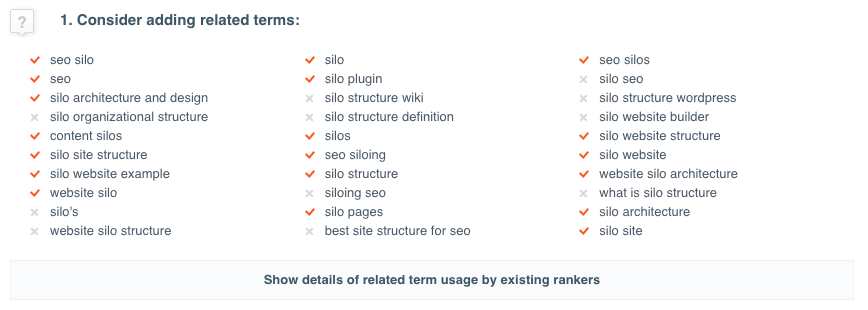
Comparing how the competition uses these keywords is also valuable. While everyone seems to have their own opinion when it comes to search engine factors like keyword density, I prefer to see what the competition is doing. That’s how to make an informed decision as to what adjustments may help.
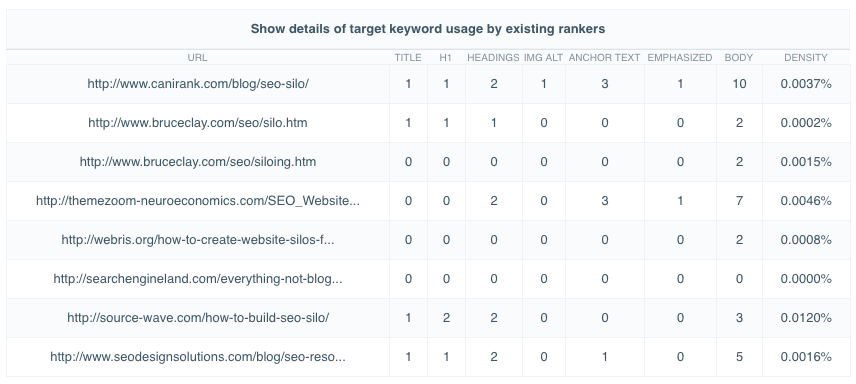
The same applies to the use of page elements such as blog, italics, and use of headers h2 through h6. Look at what the competition has done and see where you’re lacking.
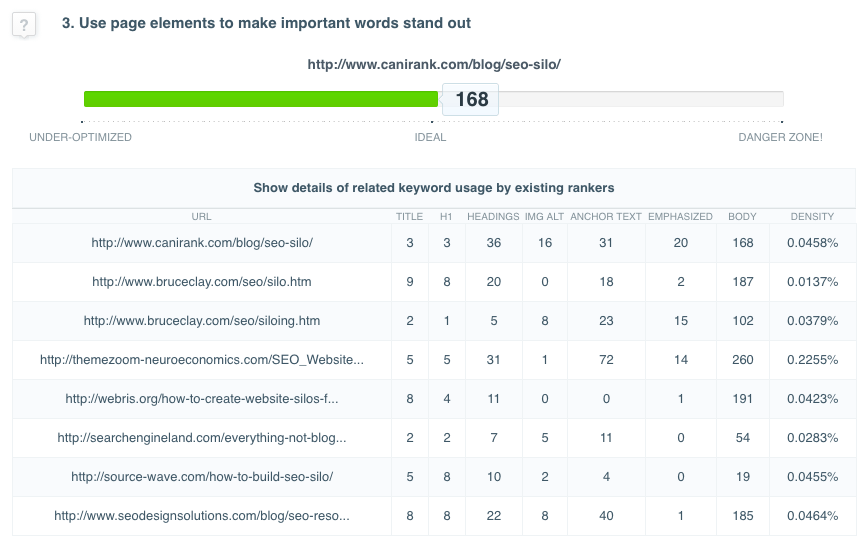
If you want to give CanIRank a try, click here.
Although the meta description tag doesn’t have a direct impact on ranking, it does affect click through rate. The meta description is the short description underneath your title that Google usually displays in its results. Think of this as an AdWords ad for which you didn’t have to pay and create a high impact description that encourages click-throughs.
Image optimization is another important element of on-page SEO optimization that can be easily overlooked. Of course, you want to make image file sizes as small as possible, without affecting visible quality, so that they load faster.
But you’re not done yet. The filename, alt text, description, and caption are all places where you have the opportunity to provide keyword rich descriptions.
The filename is only seen by search engines, but you should adequately describe the image and incorporate a keyword, if possible. The alt text tag is what visually impaired people use to understand the picture, so make sure it serves that function using a keyword-rich phrase.
The image description tag is what your audience sees when they hover their mouse pointer over a picture, while the caption tag is the text that always shows beneath the image. Some people prefer not to use the description tag because it can be a little distracting, especially if you’re already using the caption tag. Whichever you decide to use, make sure it accurately describes the image and take the opportunity to incorporate some related terms.
Another simple yet effective on-page SEO optimization tactic it interlinking with other relevant onsite content. Most people create links to older content as part of their new post workflow but don’t forget to link from older posts to new ones.
Linking is a way to create a structure that helps search engines better understand the content of your website. Most sites have blogs, but many sites just have a long running list of articles with no structure. Creating category pages is an excellent way to build site relevancy and boost your priority pages through silo development. Also, category pages tend to be stronger than individual posts and can target more competitive keywords.
Take what you’ve learned from optimizing your existing content and apply that to each new piece of content. Just remember that search engine rankings are always in a state of flux so you may need to go back periodically and perform another round of optimization, should you see your ranking slip.
Technical SEO for Beginners
Chapters, if not books, have been written about technical SEO, but there are only a handful of issues most people need to deal with at this level. Fortunately, most of them just need to be done once, and that’s it.
First things first. Set up Google Analytics (GA) if you haven’t done so already. There are other analytics packages available, but this one is free and is just fine for our purposes. GA will help you understand how much traffic you’re getting, where it’s coming from and what they’re doing on your site.
Google Search Console is another helpful free tool you’ll need to set up. It shows which keywords generated how much traffic, and monitors your keyword rankings. While many paid tools can do a better job, this one is free. Besides, it’s good enough for now.
Here’s a bonus for CanIrank subscribers. As part of your subscription package, CanIRank pulls ranking data from other well-known tools, so that you can see how your rankings change in response to your optimization efforts.

With Search Console now set up, you can submit your sitemap to Google. Although Google can crawl a lot of sites, they can’t cover the entire web. Submitting your sitemap to Google ensures they know about your site so they can take steps to crawl your site. That’s the first step to getting your pages indexed and showing up in search results.
Google isn’t fond of broken links, and neither is your audience, so anything you can do to improve the situation helps your SEO. Broken links can be internal or external depending on whether or not the link is to other content on your site, or to an external site. Either way, clicking on the link generates a 404 error and brings readers to a page that tells them the content could not be found.
To find these, use a tool like ScreamingFrog which is free for smaller sites. Use it run reports periodically to check for these broken links and correct these issues as they occur.
How to Maximize Your SEO Budget
With a budget like this, time is your greatest investment and also your limiting factor. This is how to do SEO to maximize your results by doing the following:
- Make valuable keywords, for which you have a good chance of ranking, your priority.
- Focus on getting to page one for fewer keywords. This usually provides a better ROI than ranking for lots of keywords on Page 2 or 3.
- Match your promotional efforts to your content. Don’t spend a lot of energy promoting something that didn’t take much effort to create.
- Go for the quick wins first. Getting links from suppliers, relevant industry directories and journalists is easier to achieve than a full write-up on your industry’s most prestigious site.
- Make sure you have a solid SEO foundation on-site so you can maximize the benefit of all that promotional work.
- Focus your content on a central topic to quickly build your site authority and relevance.
Take Action
You can spend a lot of time and money learning about SEO without accomplishing anything. Give CanIRank a try and learn SEO by actually doing it, your rankings will thank you. Use it to analyze your existing pages and follow the suggestions for optimizing your content.

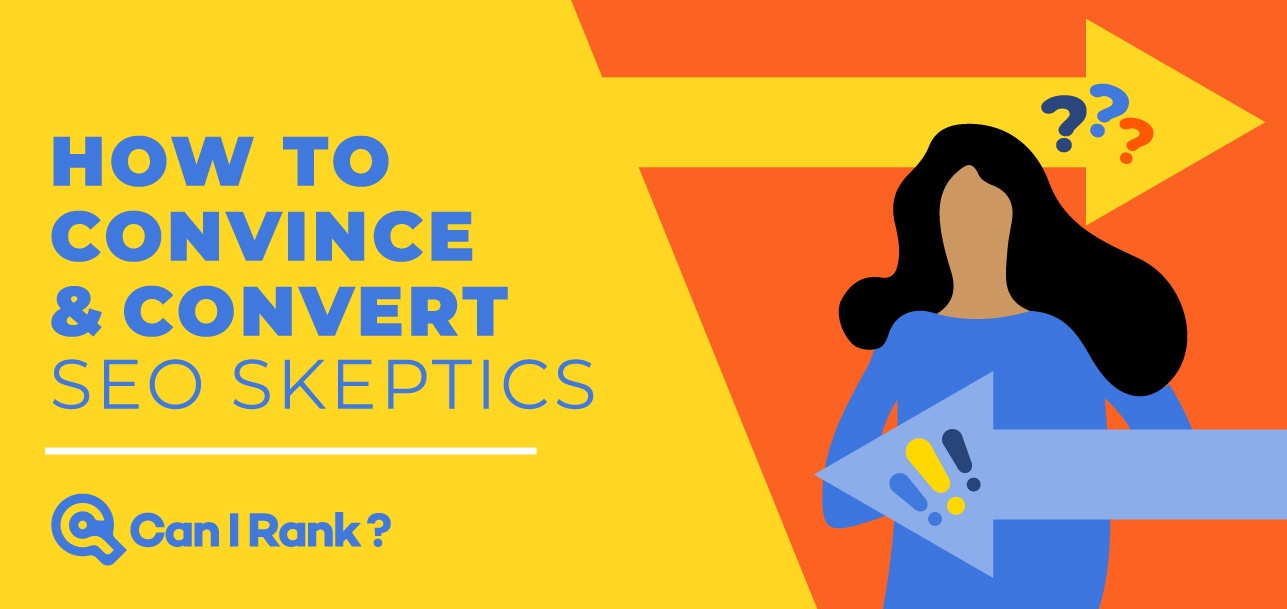
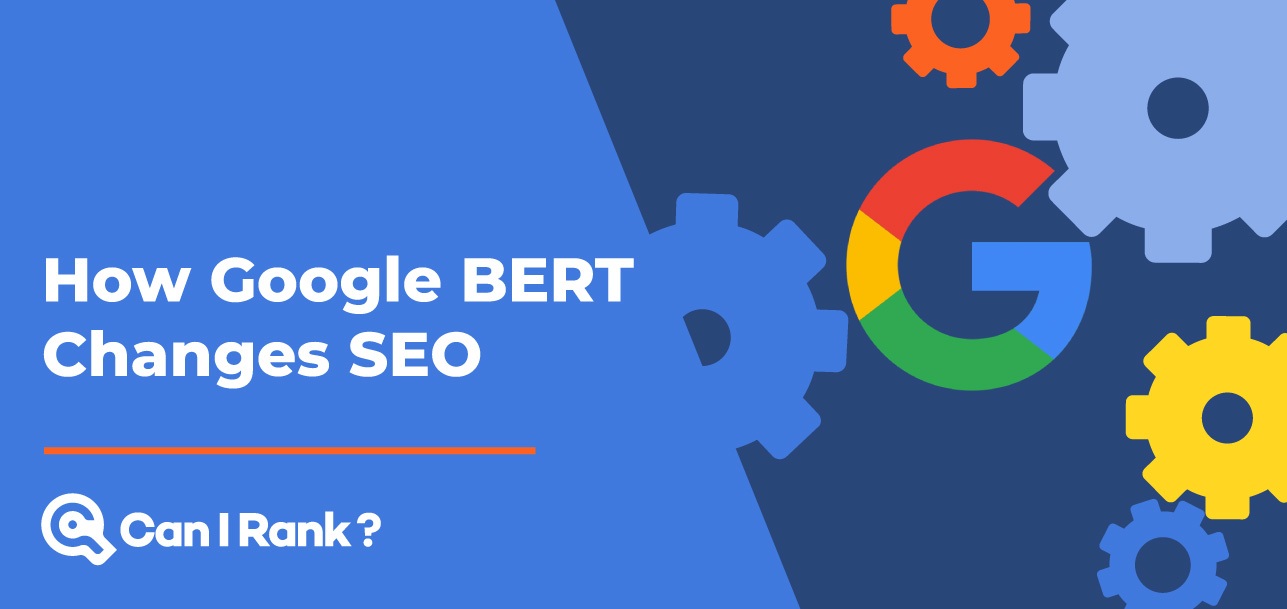

Leave A Comment